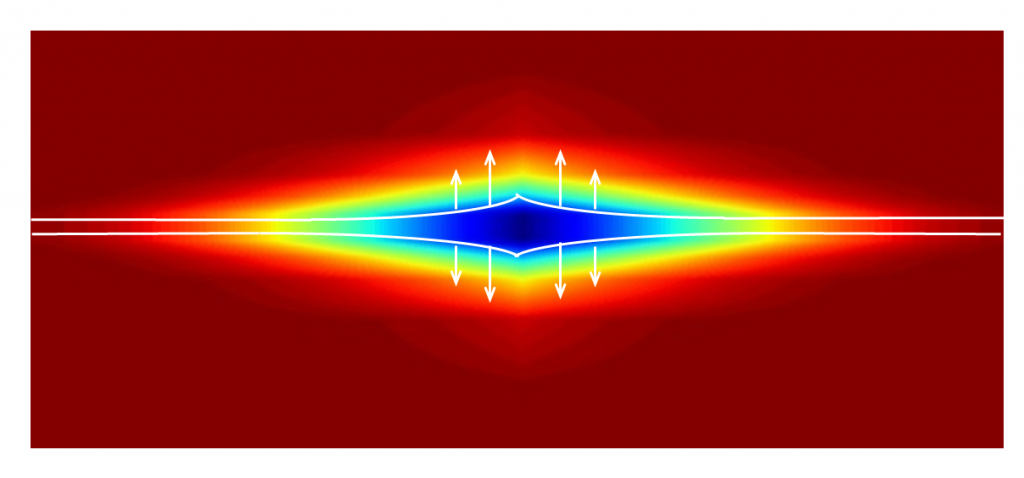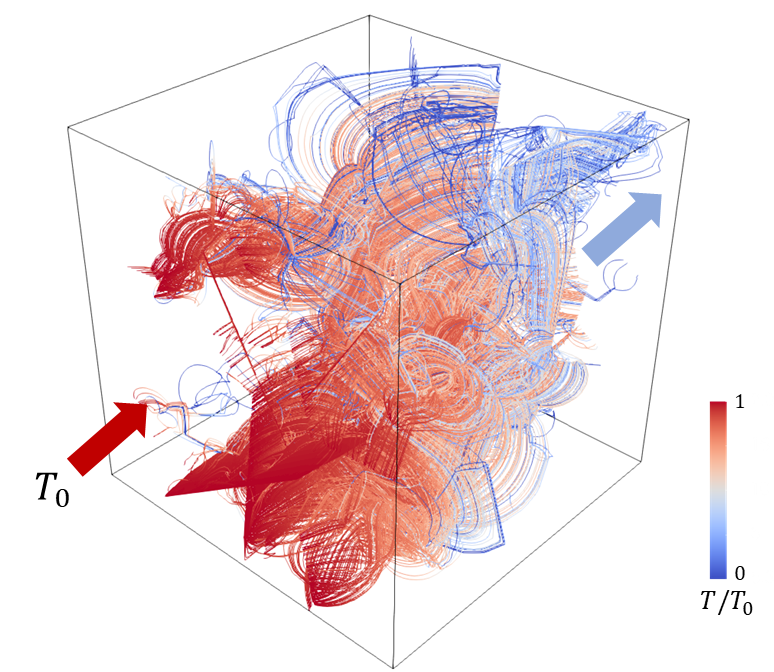Thermo-mechanical coupling in fractured media
Simulating the effects of non-isothermal fluid flow in deformable fracture networks

Context
Non-isothermal injection into fractured media causes both pressure- and thermal-driven deformations that modify fracture apertures. This variation of fracture aperture has a direct impact on both the pressure diffusion and the heat transfer, creating the so-called Thermo-Hydro-Mechanical (THM) coupling. Predicting this behavior is particularly relevant in several energy-related activities, such as geothermal energy production, carbon geological sequestration or waste-water disposal. The numerical simulation of such coupled problems is challenging and is traditionally computationally expensive.
Project Results
We simulate the thermo-mechanical coupling by adopting a Discrete Fracture Network (DFN) approach with a Lagrangian particle tracking method for the transport. We assign a thermal energy to each particle and we assume that the heat transfer occurs by means of advection within the fractures and diffusion toward the matrix. This allows us to solve the problem semi-analytically, by means of particles moving along streamlines by advection while losing their thermal energy because of the heat diffusion to the matrix. At each fracture patch we calculate the variation of the fracture aperture in response to the thermal perturbation by means of simple elasticity laws. Finally, the hydraulic conductivity is updated according to the new fracture aperture, which affects the flow regime and thus the heat transfer.

Find out more
De Simone, S., Pinier, B., Bour, O., & Davy, P. (2021). A particle-tracking formulation of advective–diffusive heat transport in deformable fracture networks. Journal of Hydrology, 603, 127157.